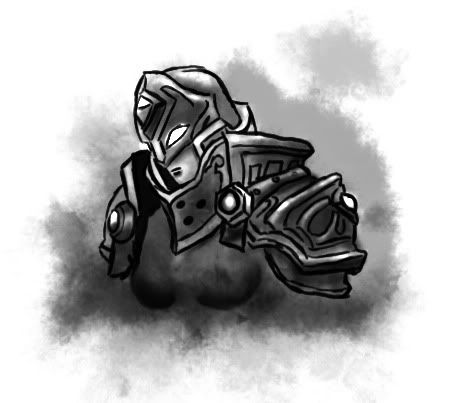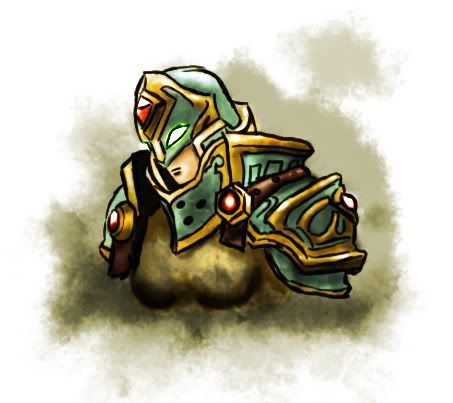Ok (phew) where to begin;
It all started on 4th of november. I mean, I was planning on going to Edinburgh at some point, but not then. I finished my job interview at 2pm, and called Serkan, with whom we'll be doing this project this year, and he just said,
"hop on a train and come to Edinburgh now, you'll never be able to do that if you get the job."Oh well...
I went home, packed and got on the 5pm train. By the way, small detail, never-ever-ever go on peak hour trains, they're bloody expensive. Took me 5 miserable no-internet hours to get there, and by the time I arrived, I set my foot on this empty city. Even the train station, which is supposed to be full of people was deserted.
 For future reference, this is Serkan.
For future reference, this is Serkan.Serkan picked me up, and after some lengthly chats, we went to sleep. The next day was quite amazing for me. As an artist, many things effect me quite dramatically. Aesthetics, culture and many other small details fill me with emotions. I was not ready for this city though.
 Spires, spires and more gothic buildings! oh my!
Spires, spires and more gothic buildings! oh my!
As if saved in a time bubble from 18th century, Edinburgh looks like one of those cities you see in movies about duellists, mages, dark sorcery and witches. From every corner I expected people with rapiers and flintlock pistols running about. The walls and the architecture simply mirrored this old era. Apart from couple of buildings that stood out like 1980's architecture nightmares with the "modern" title (especially bank buildings) The city throughout is able to give you this feeling. I sincerely suggest anyone who has the ability to go there see it for yourselves.
 Even random buildings have arrow-slits!
Even random buildings have arrow-slits! And the city has a castle built on a cliff in the middle of it.
And the city has a castle built on a cliff in the middle of it.Anyways, focusing on the project. It was the start of this year when Serkan came up with the idea of using my skills not for just computer related imagery, but for mobile phones as well. To be completely honest with you, I still use my old sony w810 cellphone, an ancient history from 2005. I've played around with smartphones before when I had the chance, but the idea of connecting to internet wherever just scares me, as I can quickly get addicted and instead of doing my normal chores while travelling, which is reading many
many books, I would just chat online with friends. The idea was quite ungrown at that time though. We just had the idea of making a narrative story aided with imagery, which would be on a mobile.
There was a lot of brainstorming as we walked around Edinburgh like proper tourists, and to be honest, it was my first time visiting somewhere with a camera, I just always hated the idea, but damn it was fun!


Anyways, what we have in mind right now is a game where people will walk about in a city, unlocking clues and mysteries, just like a detective movie, or the DaVinci code(urgh). It's going to be a "Location Based Narrative Advanture Game which plays with your sense of Reality" if we need long and unusable titles for the future!
We came up with seperate ideas. I wanted to use the telephone screen like a HUD (heads up display) you have in games and fighter jets, where you would be informed about your surroundings, using the device as a "Looking Glass" to the real world. I wanted people to twirl, look through and just walk around using their cellphones
like a mirror in a dark room when they couldn't see the vampire that was hunting them. I want people to look at their smartphones not as a smartphone, but something
arcane and magic which has a special value.Serkan wants to make the narrative into layers. The idea is, while the player is playing the game, he will gradually unlock layers into the unreal, seperating our world from what we want to show.
The final layer will be something completely different, something maybe mad to see, a mirroring of our reality in some wicked dimension.
Other ideas flew around in the next couple of days. We watched the 5th of november firework show on top of a hill while discussing the subject. I wanted to include the idea of a "Fog of War" in the game. I think it would be fun for the player to unlock this other "map" on top of our real-world map like the googlemaps on gps. As he walks around, he would unravel the city slowly, and maybe seperate quests would show up, and he could go investigate them. I am not sure if this is even possible, but it would be quite fun.
Serkan, always the realist, is more concerned about the technological aspects.

Next, while walking about museums, and speaking about the addictive parts of games, came the idea of making it a bit thrilling for the players at some points. I want the players to do what they wouldn't normally do in real world, ofcourse without getting them into
much trouble. My example would be a person in a library, where the game asks him to shout at a specific decibel for unlocking the next secret, perhaps the echo from his vantage point would reveal some clue about the storyline. Normally a person wouldn't shout or scream in a library, and it would be pretty fun to do it once, while not putting the gamer in danger and probably helping some adrenaline run through his body, which is the whole point.
 Museums filled with rapiers and flintlock pistols!
Museums filled with rapiers and flintlock pistols!My other example was counting the amount of windows of the castle from a specific point in the middle of the street, standing on a zebra crossing. Again the same principle of not putting the player in danger, but excitement of doing something
not right while trying to count the windows would be quite fun while people are honking and yelling at the player.
We spoke about which OS(operating system) to use for this project. Although I don't have any experience in coding, especially for smartphones, thankfully Serkan has some ideas, and selected Android system to use for this project much to my delight, I just really
really hate Apple.
I'll write this much for now, I'll include some photos I've taken over the course of this 4 day trip, and write more later.













